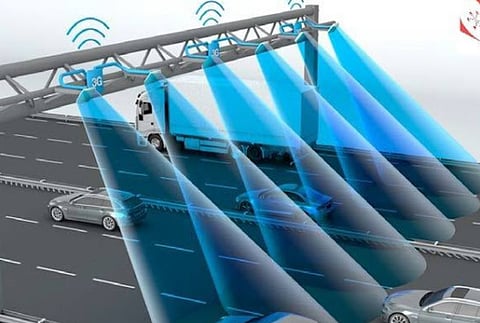
- Home
- Live Blog
- Breaking News
- Top Headlines
- Cities
- NE News
- Sentinel Media
- Sports
- Education
- Jobs

The satellite-based toll collection system, which the Ministry of Road Transport and Highways is planning to roll out soon, has many speed bumps ahead. Under the proposed system, the toll amount will be charged according to the distance travelled and deducted directly from the bank account of the vehicle owner. Challenges of technology integration and the slow pace of highway expansion work are some of the critical speed bumps that will prevent a faster implementation of the MoRTH plan to make highways free from physical toll plazas in the northeast region. The National Highway Authorities of India collect toll revenue of Rs. 40,000 crore from toll plazas across the country annually and have set a target to increase the revenue to Rs 1.40 lakh crore over the next two to three years. One of the rationales behind replacing the physical toll plazas with the satellite-based system is that it will remove traffic congestion at the toll collection centres and facilitate seamless movement of vehicles along the highways. The new system will require the installation of Global Positioning Systems (GPS) in all vehicles so that they can be tracked with the help of the satellite-based tracking system whenever they hit a national highway. In 2021, mandatory use of the Radio Frequency Identify Tag (FASTag on all vehicles replaced manual toll collection with a faster scanner-based toll collection system. This, however, requires vehicles to stop and wait in the queues at the toll plaza barriers for scanning and deduction of the toll amount from the bank account. In the proposed GPS-based system, Automatic Number Plate Reader cameras installed along the highway will detect the number plates of moving vehicles and automatically deduct the fees from the bank account linked to the number plate. Thus, the waiting time will be eliminated, and vehicles will travel seamlessly along the highways, which is a great advantage. An impact assessment study on the FASTag System by NHAI for the period February 2021 to November 2021 reflected that the introduction of FASTags reduced the average waiting time at toll plazas remarkably from 734 seconds to 47 seconds. This justifies the use of technology-based solutions for improving the highway travel experience for everyone. Seamless travel is also critical to improving fuel efficiency. The Parliamentary Standing Committee on Transport, Tourism, and Culture sounded a word of caution that certain organisations can acquire the GPS coordinates of moving vehicles using the GPS-based Toll Collection System and continuously track them, posing privacy concerns. The parliamentary panel recommended that cyber security issues should be taken into consideration before the implementation of a GPS-based toll collection system, which the Ministry must not lose sight of. The Committee recommended that the pace of road monetization be increased to cope with rising debts of the NHAI, but there is a need for clarity in the objectives of road monetization, whether it is revenue generation, infrastructure development, or maintenance funding. The Committee’s report notes that the NHAI’s debt has gone up 14 times since 2014–15 to Rs 3,47,685 crore as of March 22, 2022, and only 15 percent of the National Monetisation Pipeline targets have been achieved in the last two years. The Ministry should expand the scope of monetisation of road assets to reduce the debt. Therefore, the replacement of physical toll plazas with satellite-based, barrier-free toll collection is sought to be fast-tracked to increase road asset monetization. Another key recommendation made by the Committee is that the Ministry should seek assistance from foreign countries like Germany, Belgium, Bulgaria, etc., which have adopted GPS-based tolling systems. The technological challenges of the satellite-based system are likely to be experienced during its rollout in the pilot phases. Apart from privacy issues on account of the GPS tracking system, the collection of toll fees at exorbitant rates could fuel anxiety among highway users. The quality of highway stretches is lacking uniformity; wider consultation among stakeholders is needed so that the toll fee is fixed rationally and considering the actual condition of the roads. Reliability of the GPS system will be another area of concern, and transparency of the systems to be deployed will be crucial to boosting public confidence. The government has already installed vehicle location tracking devices on transport vehicles carrying hazardous goods. To operationalize the new system, the vehicles will need to install a tracking device that communicates with the satellite and facilitates the estimation of the distance travelled. Replacement of all toll plazas with the satellite-based system will not be feasible until every vehicle is fitted with a tracking device. Enforcing the new technology without achieving this will make highways inaccessible for vehicles not fitted with a tracking device. This will result in a decline in toll collection, which is not desirable. Addressing these challenges will be essential for the hassle-free rollout of the proposed satellite-based toll collection system.